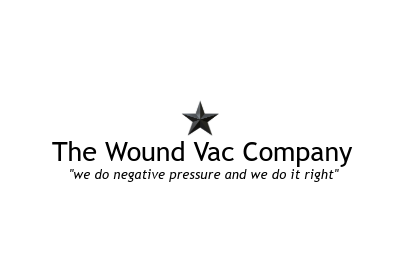About the Negative Pressure Wound Therapy (NPWT) Process
Negative pressure wound therapy (NPWT) is a medical procedure that uses a vacuum, tubing and dressing to treat a wide variety of burns, acute, chronic and complex wounds. The vacuum, or “wound vac” control unit, is connected to the wound via tubing and a clean dressing that pulls fluid away from the open wound and protects the area from infection.
In this post, we’ll look at the types of wounds NPWT is used for and briefly describe the process.
Uses for NPWT
As described in our recent post on wounds and wound healing, NPWT can be used to help treat and heal:
Diabetic ulcers
Bedsores (also known as pressure ulcers)
First- and second-degree burns
Trauma and gunshot wounds
Surgical wounds, especially those with a high risk of infection
Other complex wounds with large amounts of drainage
Negative pressure therapy is often used in hospitals and clinics but can also be used in homes by visiting home health care providers.
The NPWT process has become increasingly popular over the past 20 years, in part because it is non-invasive, can be administered in many settings and provides just the right amount of moisture necessary for healing while also protecting wounds from outside contaminants, such as dirt and bacteria.
The Process
After cleaning (a process also known as debridement), a sterile, open-cell foam or gauze is cut to fit the size of the wound and packed into the opening. Next, the wound is covered with a clear, thin dressing that creates an airtight seal around the wound.
A vacuum pump, or control unit, is attached to the dressing with tubing, which pulls fluid and dead tissue away from the wound and into a collection canister. The vacuum can be adjusted to regulate the strength of the suction (from -125 to -75 mmHg, depending on the patient and the wound being treated) and the length of time.
Dressings must be changed regularly during treatment. Removal and changing of dressings is usually pain-free and minimizes damage to any new skin forming around the healing wound; however, patients can experience varying of levels of pain during NPWT, depending on the location and type of wound, so pain medications are often used alongside this therapy.
Important considerations
Negative pressure therapy can be a highly effective, efficient and economical way of treating complex and chronic wounds IF:
Healthcare providers are properly trained on procedures and use of all equipment
The wound is routinely checked for any signs of infection or change
The dressing around the wound remains clean and is regularly changed
The drainage tubes are connected properly to the collection canister
Drainage is flowing correctly into the canister (e.g., the tubes are not clogged, bent or blocked in any way) and the negative pressure seal is intact
The collection canister is monitored and changed regularly
For more information about negative pressure wound therapy and continuing education courses on NPWT for healthcare and insurance professionals, please contact The Wound Vac Company.

